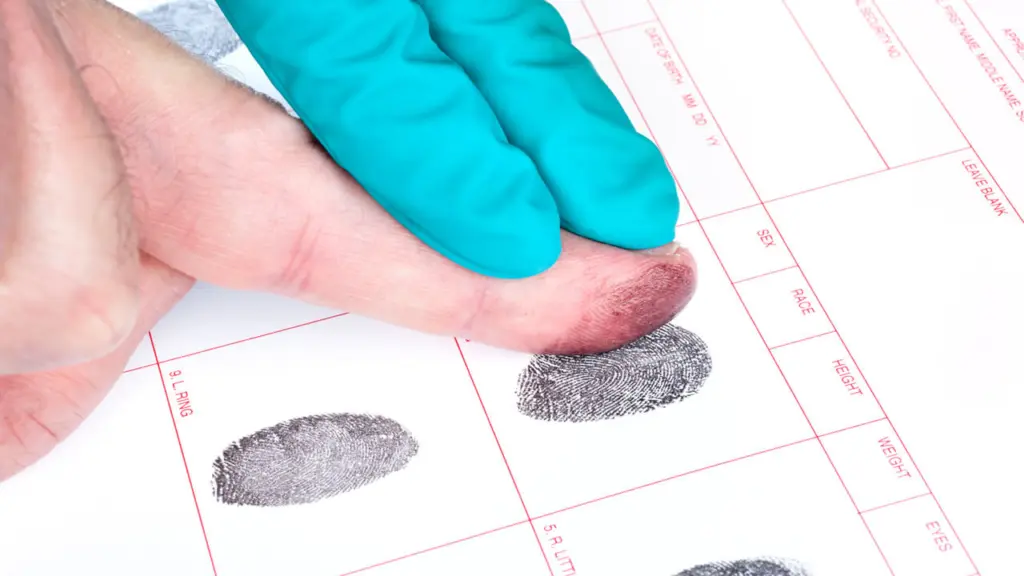NY in 2025: What Are Immigration Fingerprints For?

What are immigration fingerprints for? For many Latino migrants starting their journey in the U.S., this simple question marks the beginning of a complex and often overwhelming process.
Every year, USCIS handles nearly 3.6 million biometric appointments, a critical step used to confirm your identity and conduct thorough background checks.
This step may feel intimidating, but recent improvements have made the process more accessible and efficient.
In fiscal year 2023 alone, over 33,000 biometric appointments were successfully rescheduled online, giving applicants greater flexibility.
And since April 2024, the additional biometric fee has been removed for most applications, making this requirement less of a financial burden.
Below, we explain the importance of biometric data, how it works, and what to do if there’s a conflict in your record. At Moumita Rahman – Immigration Attorneys, we have extensive experience handling these procedures with the relevant agencies to ensure your application has the proper legal support.
What Are Immigration Fingerprints For?
Biometric data plays a vital role in safeguarding the U.S. immigration system. In the following section, we explain why immigration fingerprints are indispensable, how the system operates, and what to do if your record raises concerns.
Immigration fingerprints are a crucial component of the U.S. immigration system’s use of biometric data to confirm the identity of applicants, perform background checks, and uphold national security.
The U.S. Citizenship and Immigration Services (USCIS) gathers fingerprints as part of a broader effort to ensure that individuals seeking immigration benefits are properly vetted, this helps prevent fraud and reinforce the integrity of the process
Identity verification and application integrity
The primary purpose of immigration fingerprints is to verify identity. Fingerprints are unique to each individual and provide a reliable method to confirm that a person is who they claim to be.
This reliability is critical, as name-based checks alone can lead to mistakes when names are common or have changed.
When someone submits an immigration application, such as for a green card, asylum, work permit, or naturalization, USCIS uses biometric data (fingerprints, digital photos, signatures) to match existing records or generate new, secure biometric profiles.
Background checks and criminal screening
Fingerprint data also facilitate extensive background checks through federal systems such as the FBI’s Integrated Automated Fingerprint Identification System (IAFIS), DHS’s IDENT system, and the Department of Defense’s ABIS.
These checks help identify criminal records, immigration violations, or security concerns linked to the applicant, ensuring that individuals who pose threats are flagged before immigration benefits are granted.
National security and fraud prevention
Since 9/11, the collection of biometric data like fingerprints has become crucial to national security.
This data enables USCIS and associated agencies to detect and deter identity fraud, terrorist affiliations, and criminal activity.
Moreover, stored biometrics support future checks, making it more difficult for someone to use a different identity in subsequent immigration filings.
Legal basis and ongoing use
Federal regulations grant USCIS the authority to require the submission of biometric information. These provisions are codified in:
- 8 CFR 103.2(b)(9) – which governs the submission of biometrics to establish eligibility, and
- 8 CFR 103.16 – which outlines procedures for collecting, using, and storing biometric information.
USCIS’s biometric policy allows for the reuse of previously captured biometrics across certain applications, reducing the need for repeat appointments and streamlining processing.
Understanding the importance of immigration fingerprints helps demystify the immigration process.
They are not merely procedural, they are essential tools for identity verification, background screening, and national security, all grounded in federal law.
If your biometric record encounters a conflict or error, it’s important to address it proactively with legal support to ensure your application proceeds smoothly.
What Is a USCIS Fingerprint Appointment?
Your fingerprint appointment, also known as a biometric appointment, is one of the first and most important steps in your immigration process. Understanding what will happen during this visit can help you feel prepared and reduce unnecessary stress.
This appointment is a short visit to a USCIS Application Support Center (ASC), where your fingerprints, photo, and signature are collected.
Depending on your case, USCIS may collect:
- Code 1: Ten fingerprints
- Code 2: Index fingerprints, photo, and signature
- Code 3: All three (ten fingerprints, photo, and signature)
The appointment itself typically lasts 15–20 minutes, although waiting times can vary depending on the location and the day.
To avoid any issues, it’s best to arrive at least 15 minutes early and bring your appointment notice along with a valid photo ID, such as a passport, driver’s license, or green card.
Missing this appointment without rescheduling can lead to your application being considered abandoned, which may delay or even jeopardize your immigration process.
By knowing what to expect and arriving prepared, you can ensure the biometric appointment goes smoothly and keeps your immigration case moving forward without unnecessary delays.
How Long Does It Take to Get a Fingerprint Appointment?
Typical timeframe
After filing Form N-400 for naturalization, USCIS generally sends the biometrics appointment notice within 4 to 6 weeks.
Some reports, however, indicate that appointments may be scheduled within 5 to 8 weeks depending on processing times and location.
Real-life insights
Community experiences often confirm this timeline, though there can be exceptions. For example:
- “You should get a biometric appointment in the next two weeks max.”
- “I got my biometrics notice one day after… online.”
While individual experiences vary, most applicants find that their biometrics appointments are scheduled within the 4–8 week window, offering a reliable estimate for planning ahead.
What Happens After Biometrics?
Once you’ve completed your biometrics appointment, USCIS begins a series of steps behind the scenes to move your application forward efficiently.
Background screening: First, your biometric data is sent to the FBI and other federal agencies to check for any criminal or immigration history.
This step ensures that your record is clear and that your application can proceed without delays.
- Processing time: These background checks typically take 30–45 days to complete, though timelines may vary depending on your case and the agencies involved.
- Validity period: Your biometrics remain valid for 15 months, giving USCIS ample time to process your case. However, if your application is still pending after this period, you may be asked to attend another appointment to update your data.
- Next steps: Once your background screening is cleared, USCIS continues reviewing your application and will notify you when it’s time to schedule your interview or move to the next phase of adjudication.
By understanding what happens after your biometrics appointment, you can set realistic expectations and feel more prepared for the next stages of your immigration journey.
If you believe your records may show a conflict, consult an immigration attorney before your appointment.
Why Is Biometrics Important for Immigration?
Biometric data plays a critical role in ensuring that the U.S. immigration process is secure, accurate, and efficient. Here’s how your fingerprints are used after your appointment:
- Prevents identity fraud by verifying identity across multiple encounters.
- Enhances national security by matching fingerprints with criminal databases.
- Enables document production, like Green Cards or Employment Authorization Documents (EADs).
Understanding the purpose of your biometric data helps you see this step not as a hurdle but as a vital part of ensuring your case progresses smoothly and securely.
How Long Does the Fingerprint Appointment Itself Take?
Your biometrics appointment is a quick process, but knowing what to bring and what to expect will help you avoid unnecessary stress or delays:
- Estimated duration: 15–20 minutes of biometric collection, excluding waiting time.
- Bring essentials: Appointment notice, specific documents listed on it, photo ID.
- Fee: Typically included in your application fee; standalone appointments may require an $85 charge.
Arriving prepared ensures the process goes smoothly and keeps your immigration case on track without unexpected issues.
What If I Miss or Can’t Attend My Appointment?
Life happens, and sometimes attending your scheduled biometrics appointment isn’t possible.
If you find yourself in this situation, it’s important to take quick action to keep your case from being delayed or denied.
- Rescheduling: You can submit a reschedule request through your USCIS online account or by phone, as long as you have a valid reason and do so before the scheduled date. Failing to reschedule may result in your application being denied as abandoned.
- Mobile biometrics: If health issues or a disability prevent you from traveling to the Application Support Center, USCIS may approve mobile biometric services on a case-by-case basis to ensure your data is collected without compromising your process.
- Practical advice: To avoid missing critical notices, keep your mailing address updated and check your USCIS online account regularly.
This is especially important given possible postal delays or sudden changes in your circumstances.
Why You Need an Immigration Attorney for Your Biometrics and Beyond
While attending your biometrics appointment may seem like a straightforward step, the reality is that your fingerprints connect to every part of your immigration case.
Any mismatch, unresolved record, or past issue can trigger delays, or worse, denials, that are difficult to handle on your own.
An experienced immigration attorney can:
- Identify potential issues early by reviewing your case and spotting red flags before they become problems.
- Guide you through complex procedures, ensuring that your documents, timelines, and USCIS communications are accurate and up to date.
- Provide representation if your biometrics trigger additional reviews or background checks, protecting your rights and keeping your application on track.
- Advocate for you in case of errors or conflicts, ensuring your case is treated fairly by the relevant agencies.
Having professional legal support not only reduces stress but also increases your chances of a smooth and successful immigration process.
Get Ready for Your Immigration Fingerprint Appointment and Avoid Delays
Your fingerprints are more than just an appointment requirement—they are the key to your entire immigration history. From background checks to identity verification, they determine how smoothly your application moves forward.
By working with a trusted immigration attorney, you can ensure that your records are accurate, your rights are protected, and your path to legal status is secure.
In short, understanding what are immigration fingerprints for and how they impact your case is essential. Contact Moumita Rahman – Immigration Attorneys today and schedule your consultation to take control of your immigration journey.



